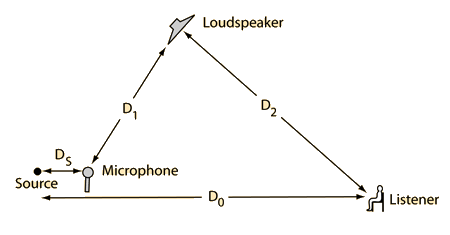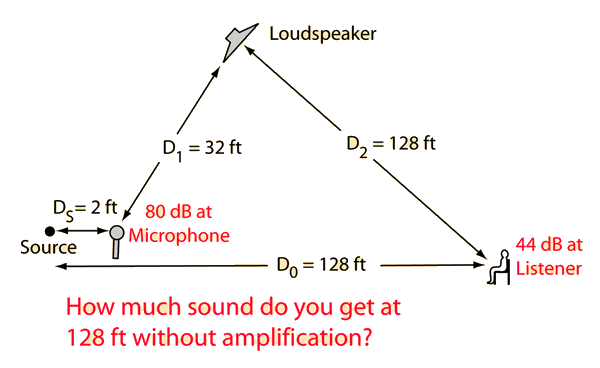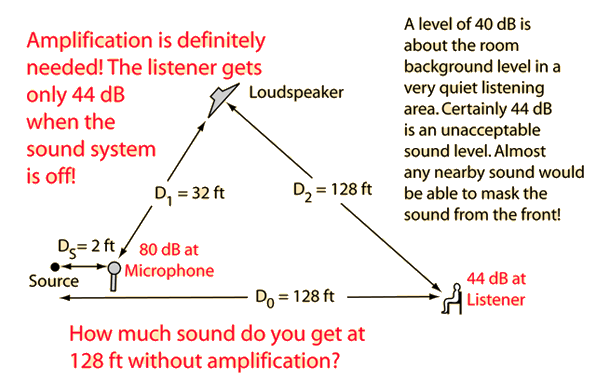Simplified Model: Sound Reinforcement
|
Assume*:
| The loudspeaker provides more sound to the listener than would otherwise have been received, but it also produces sound at the location of the microphone. This feedback to the microphone limits the amount of amplification which can be used. Control of the feedback generally is the determining factor for the potential acoustic gain that can be achieved by a sound reinforcement system. |
| The microphone creates an electrical image of the sound which is amplified and used to drive a loudspeaker. |
 |
*These idealizations are never met in any real room, but they provide a framework for building a model. The assumptions will be relaxed later.
| Numerical example |
Sound reproduction concepts
| HyperPhysics***** Sound | R Nave |


